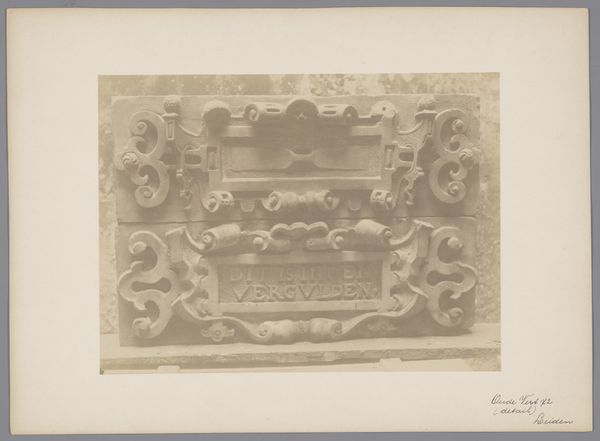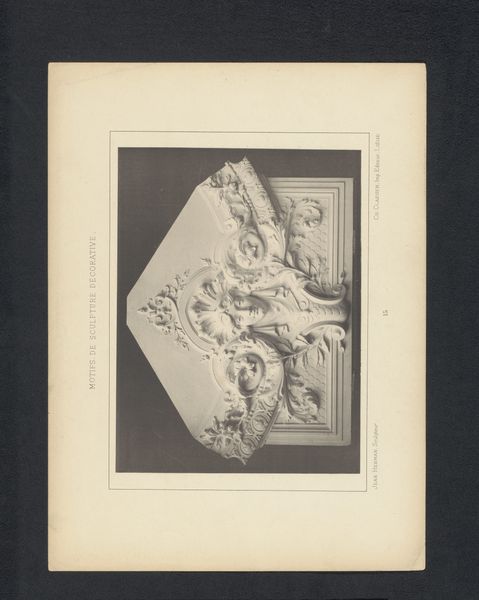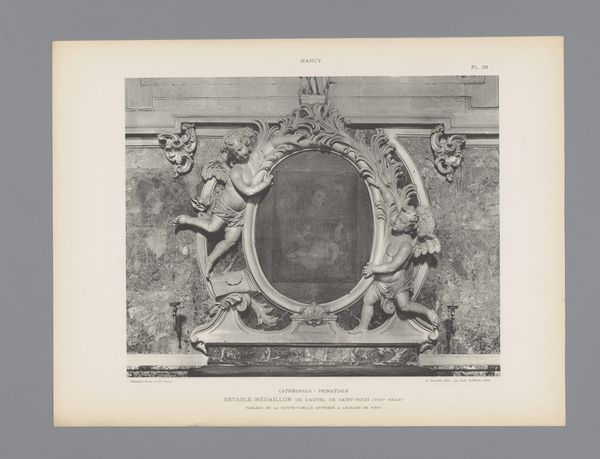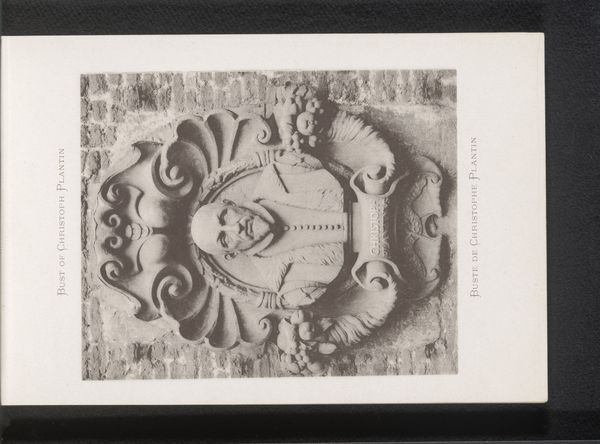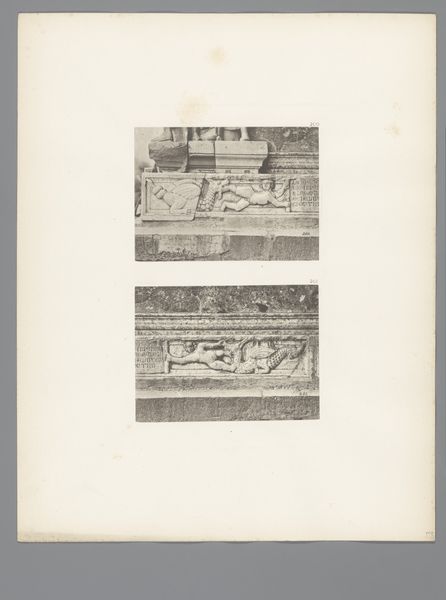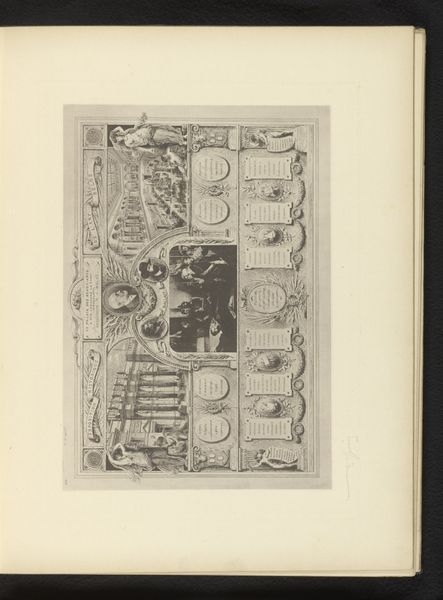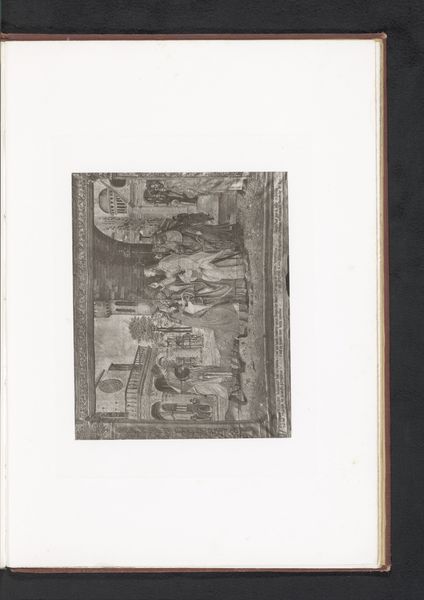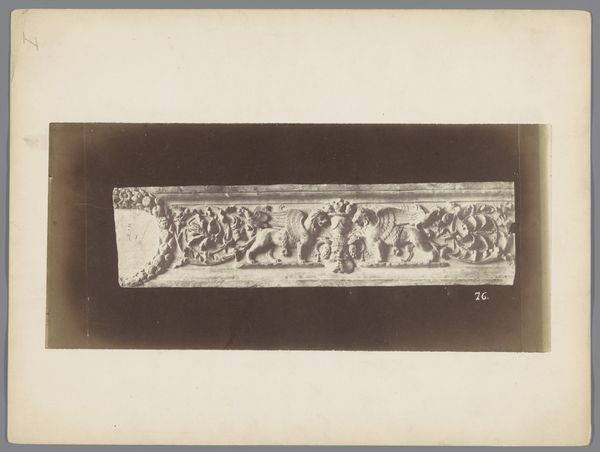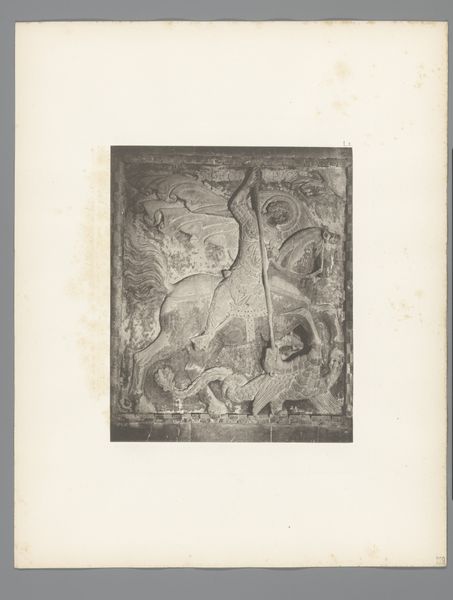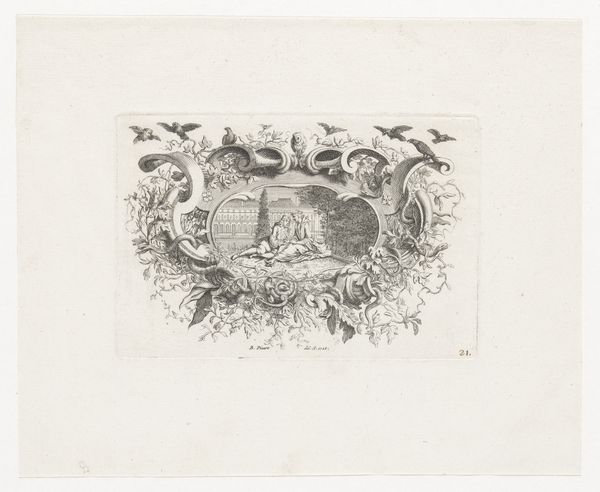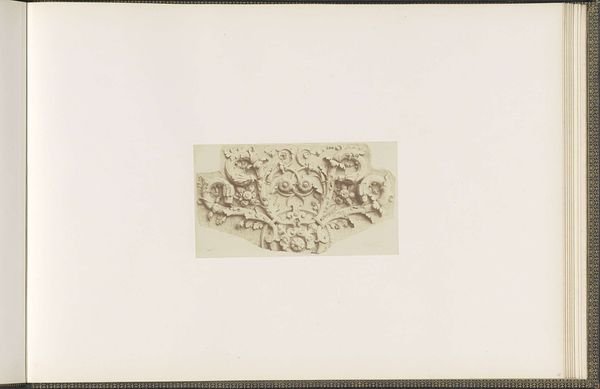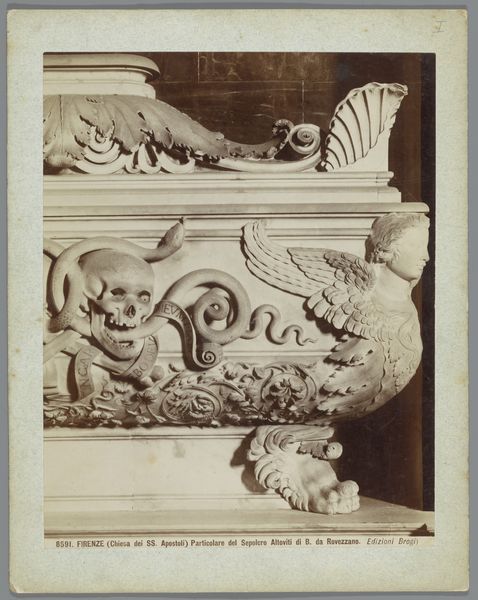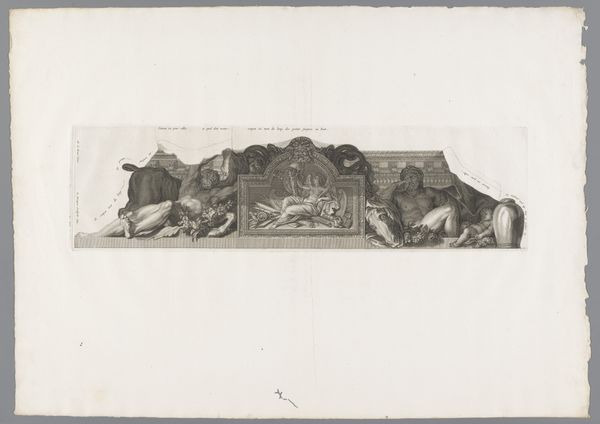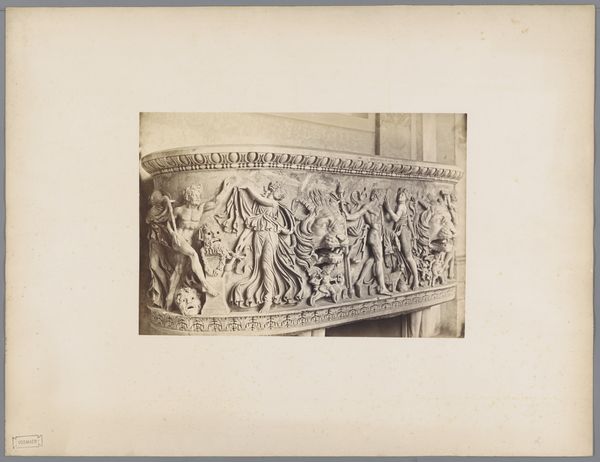
print, relief, photography, gelatin-silver-print
# print
#
relief
#
landscape
#
classical-realism
#
photography
#
geometric
#
ancient-mediterranean
#
gelatin-silver-print
Dimensions: height 311 mm, width 395 mm
Copyright: Rijks Museum: Open Domain
Curator: Ah, this photograph captures a relief from the San Marco in Venice. It was taken before 1885 by Carl Heinrich Jacobi. What's your initial take on it? Editor: Immediately, it feels very classical and stoic, you know? A sort of gray, otherworldly pageant frozen in time. The figures look like they're caught in some grand narrative, all happening at once. Curator: Yes, precisely. It speaks to the visual language employed by classical-realism, echoing forms found in ancient art. Consider how relief sculptures traditionally function—public statements of power, religious narratives, or moral instruction, invariably rooted in the social and political contexts of their time. What can be interpreted here? Editor: There's something fascinatingly… performative about it. The arrangement, like a scene from a very serious puppet show. The figures almost seem posed, self-aware in their frozen roles, and I feel as if I recognize that pose. It resonates with poses of other ancient artwork. Does it to you? Curator: Certainly. Let's remember that Venice was a crucial intersection of cultures—East met West. San Marco itself is steeped in history and visual influences reflecting its unique geopolitical status. How does this historical backdrop shape your perception of the photograph? Editor: Makes me consider that whoever created this relief was also influenced. I find my modern-day self searching for hidden messages and narratives embedded within the stone. The gelatin-silver print technique that Jacobi used creates this very intriguing depth in monochrome, and an interplay of shadows, I wonder how he made the artwork more meaningful in this way? Curator: Excellent observation! And do think about how the choice to photograph the artwork itself is part of a later interpretive act. How does mediating the relief with photography affect its story, or indeed, construct a new one? What does this imply about our relationship with the past? Editor: It becomes a echo chamber. Layers upon layers, right? Jacobi's interpretation layering atop another interpretation. But the details almost make you wanna reach in, explore, or touch those stone surfaces. Which in a weird way, adds an emotional depth I didn’t expect from an old relief photograph. Curator: I agree wholeheartedly. It makes one question what is photography other than a tool for documentation, it captures stories and provokes thoughtful observations that weave a deep discussion regarding historical contexts and perceptions. Editor: You’ve given me so much to ponder regarding this piece. The play of ancient versus new—or ancient as perceived by "new"— keeps playing on my mind. A real mirror trick that this.
Comments
No comments
Be the first to comment and join the conversation on the ultimate creative platform.
